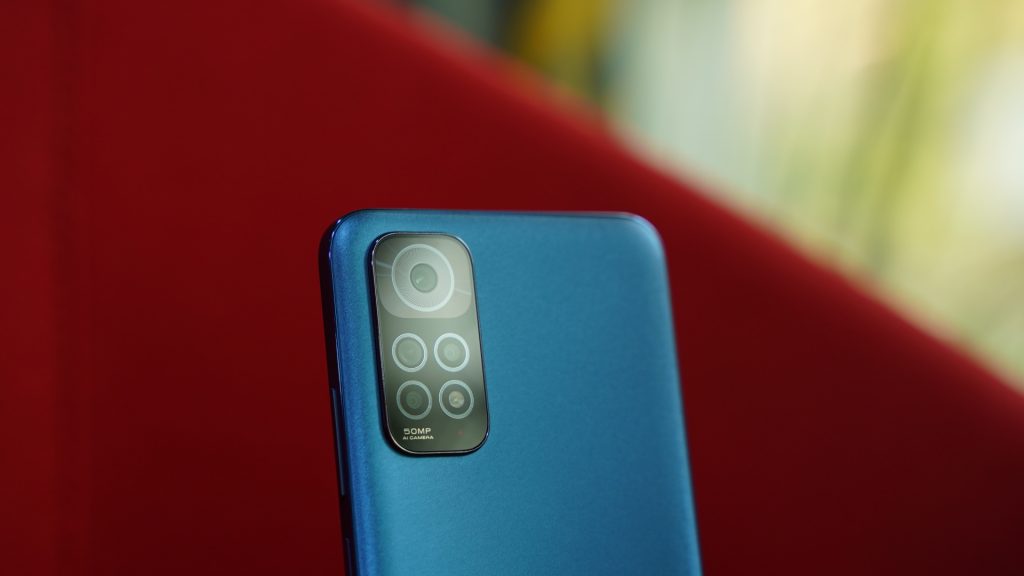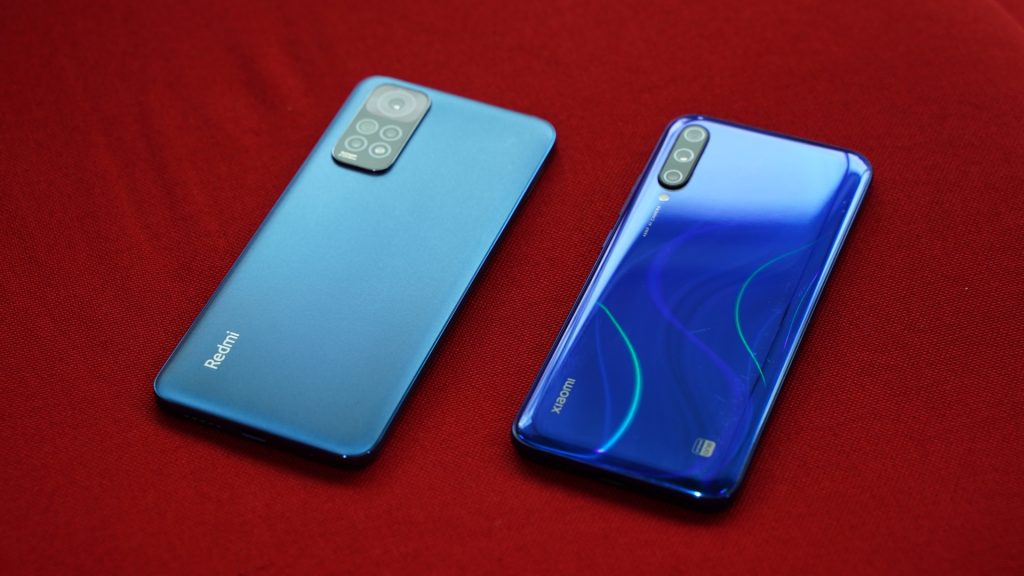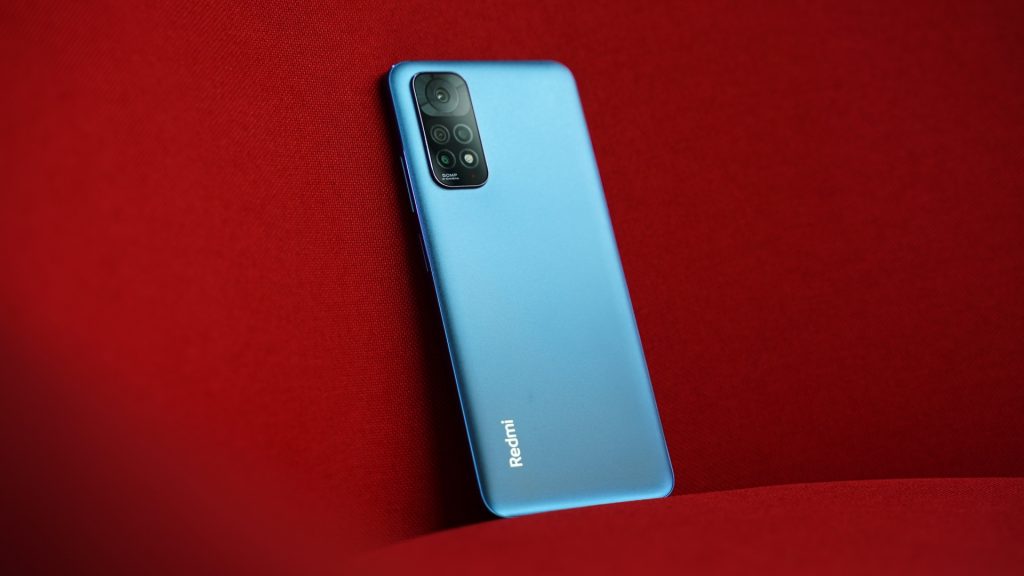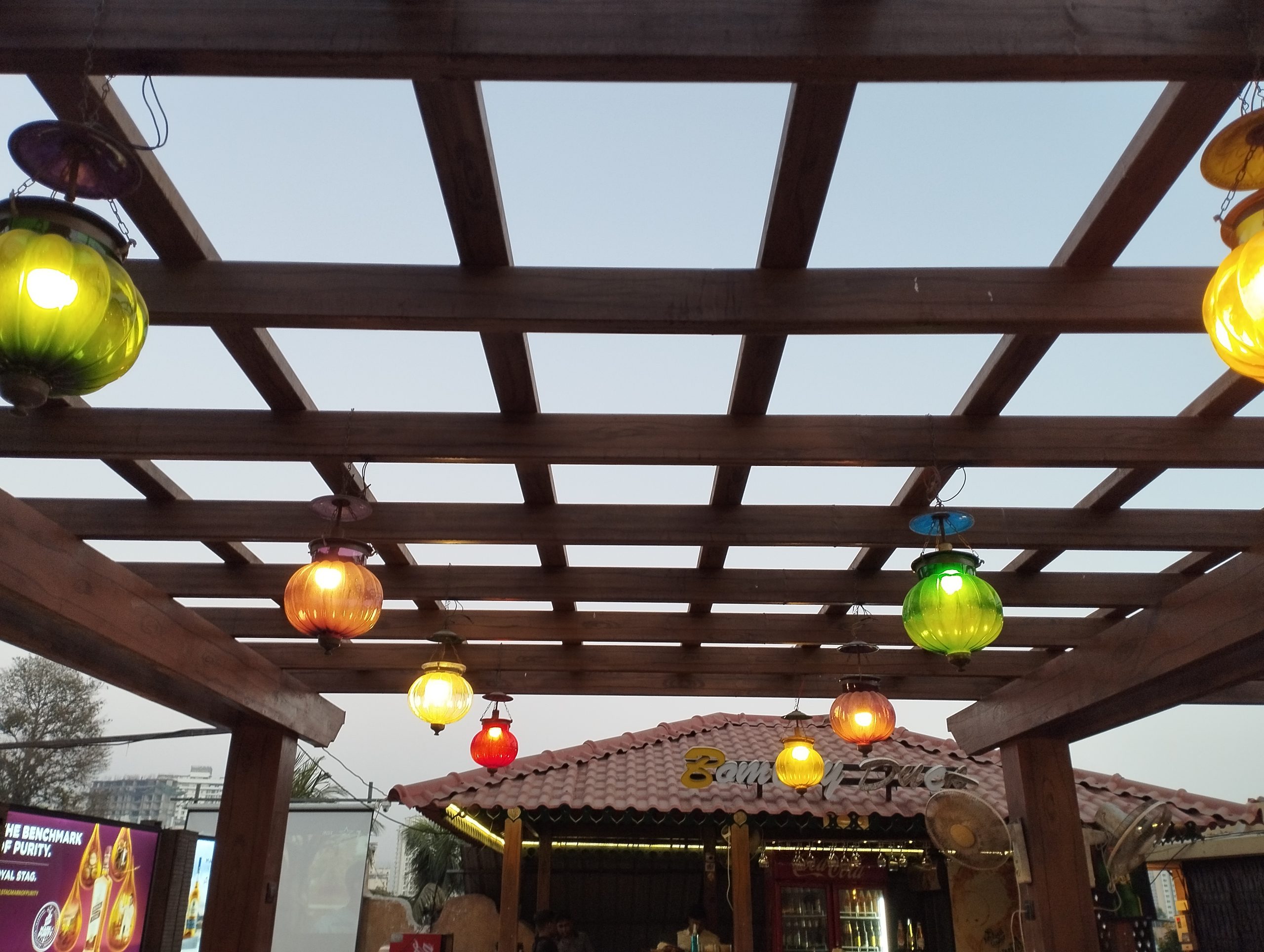Last Updated on May 31, 2022 by saba
A few years ago, it was easy to recommend Xiaomi smartphones. For instance, in 2019 the Note 8 was the best sub-10k smartphone. For those who could stretch the budget a bit, the Redmi Note 8 Pro was the way to go. Back then, Xiaomi’s line-up was clearly defined and easy to comprehend for consumers. Fast forward to today, and here I am perplexed with the Redmi Note 11 series. I don’t know how the Redmi Note 11 differs from the Redmi Note 11S, Redmi Note 11 Pro, Redmi Note 11 Pro 5G, Redmi Note 11E, Redmi Note 11E Pro, Redmi Note 11 Pro+ 5G, and Redmi Note 11T 5G. But, let’s not get bogged down by this confusing naming scheme, and find out if the Redmi Note 11 is worth your money.
Design

The Redmi Note 11 shares the core design with its predecessor. It has a slightly curved back with minimal Redmi branding as seen on the Redmi Note 10. The camera module with its signature protrusion sits on the left-hand side. The button placement is almost identical to its predecessor too.

Subscribe to Onsitego
Get the latest technology news, reviews, and opinions on tech products right into your inboxThat said, there are a few changes that greatly alter the experience. For starters, the Redmi Note 11 has a blocky outline. The sides are flat, which is a stark departure from the ergonomic curves on the Redmi Note 10. The Redmi Note 11’s budget roots are evident from its plastic body, which lacks the premium appeal of early Xiaomi phones such as the Mi A3. But on the bright side, the Redmi Note 11’s plastic body is less susceptible to scratches.

Those with butterfingers will appreciate the additional grip offered by the phone’s matte finish. The handset feels sturdy and at 179 grams it isn’t heavy either. For protection against drizzle and accidental splashes, the Redmi Note 11 is rated IP53.

As per Xiaomi, the phone has dual stereo speakers. We checked this claim with magnetic paper and can confirm that the two speaker grilles are not just for aesthetic purposes. Xiaomi has retained the side-mounted fingerprint sensor from the Redmi Note 10. While the under-display fingerprint scanners look cool, the side-mounted one on the Redmi Note 11 is incredibly fast and accurate.
Display

The Redmi Note 11 sports a 6.4-inch Full HD+ OLED display with a punch-hole design. Xiaomi deserves praise for choosing OLED over cheaper LCD tech. We have explained multiple times how OLED technology offers vibrant colours and deep blacks compared to LCDs. Those interested to take a deep dive into this topic, should head over to this link.
The phone comes with elaborate display settings. For starters, you get to choose between three colour modes — Vivid, Saturated, and Standard. If you prefer lively colours, select the Vivid mode. For those who prefer muted colours, Standard mode is the way to go. The phone offers colour temperature presets such as Warm, Cool, and Default. If you want finer control, there’s an option for setting custom values.

The screen’s pixel density of 409 ppi ensures sharpness. On top of that, you get a 90Hz refresh rate setting, which gets rid of fuzziness to a certain extent. For a budget phone, the panel offers impressive brightness levels. With the brightness cranked all the way up, our lux meter detected around 1,000 nits.
Software

Android 12 has been out for half a year. However, the Redmi Note 11 settles for Android 11 with MIUI on top. If you have used the Redmi Note 10, there’s hardly anything new in terms of aesthetics. Speaking of which, Xiaomi’s latest software isn’t easy on the eyes. Thankfully, it offers detailed customisation options to get around this issue.
You get the usual MIUI home screens, app drawer, widgets, and folders. By default, the far left home screen is loaded with widgets that showcase app shortcuts, news, and app recommendations. Xiaomi has split the notification bar and control centre into two different elements. Swiping down from the left side gives you access to the notification panel. On the other hand, pulling down on the right side triggers the control panel.
What’s missing here is the split-screen multitasking. Instead of that, MIUI 13 offers ‘floating windows’. While this feature lets you open two apps at once, it stacks a small app window on top of another app rather than snapping them side by side. So, it is quite cumbersome to use.
As per Xiaomi, the company has made plenty of improvements in terms of resource management. After using it for over a week, I can tell that the MIUI 13 feels less bloated than its predecessor. The new software also has more efficient control over background processes. Fortunately, it is not too aggressive so you can switch between the apps without losing the current state.

The phone comes with some useful apps including the Mi Remote app, which turns your phone into a universal remote. On the other hand, there are some apps such as Mauj, Mi Credit, and Mi Pay that nobody asked for. Plus, there’s a dedicated “Security” app made by the Chinese company. It is like using anti-virus software developed by Iran.
Gaming

Powered by Qualcomm’s Snapdragon 680 chipset, the handset runs most games without breaking a sweat. You can in fact enjoy games such as Call of Duty Mobile. Just don’t expect it to handle high graphics settings and high frame rates. For distraction-free gaming, you get the Game Turbo mode. It offers game DND, performance optimisation, and a Wi-Fi reception boost. Even with this mode, the frame rate peaks at 48 for most games. While the chipset is not very powerful, it fares well in terms of consistency as evident from the thermal throttling test.
The OLED display improves the gaming experience. Not only do you get high visual fidelity, but the 180Hz touch sampling rate and 90Hz refresh rate give you the edge in online gaming.
Cameras

The Redmi Note 11 is equipped with a 50MP main camera along with an 8MP wide lens. Xiaomi has also thrown in 2MP macro and 2MP depth cameras.
The camera interface is a standard Xiaomi affair. Swiping sideways lets you switch between various modes such as Photo, Video, Portrait, and pro. The last one enables you to fine-tune aspects such as white balance, exposure, ISO, and shutter speed. At default settings, the Redmi Note 11 captures 12MP shots. You can opt for 50MP captures but it barely offers any advantage.
For most scenarios, the AI mode delivers the best possible results. Moving to the subject of picture quality, you get good results with a decent amount of detail and natural colours. However, the noise levels are a definite downer.
Switching to the 8MP camera results in a significant loss of detail. Like most wide-angle cameras, this one has a slightly noticeable barrel distortion around the edges. Compared to the main camera, the photos captured by the wide snapper seem to have a warmer tone.
In low light conditions, the image quality takes a serious hit for the main as well as the wide camera. While the colours seem fine, the noise gets out of hand. The night mode is restricted to the main camera, and its performance is a mixed bag. It does brighten up the low light images but while doing so it tends to shoot up the noise.
For self-portraits, the Redmi Note 11 comes with a 13MP front-facing snapper. For a fixed focus camera, it does a good job at keeping things in focus. The colours look fine but the camera tries too hard to brighten up every shot.
Moving onto video recording, the phone is capped at 1080p 30fps. You don’t even get the option for 1080p 60fps, which is peculiar considering the Redmi Note 10 supported 4K capture. Like every other budget smartphone, the Redmi Note 11 lacks OIS (Optical Image Stabilisation). I couldn’t find any setting or toggle for EIS (Electronic image stabilisation) either.
Battery
The Redmi Note 11 packs in a 5,000 mAh battery. Its large capacity combined with the 6nm energy-efficient Snapdragon 680, delivers impressive battery life. The phone easily lasts for over a day on a single charge with moderate usage. If you are a heavy mobile user, the battery should get you through from dusk to dawn.
Xiaomi has been generous to ship the phone with a 33W charger. It takes around half an hour to reach 50 percent battery capacity, which is quite good.
Verdict

The Redmi Note 11 is a good handset that offers a high refresh rate OLED screen and long battery life on a budget. It has enough power to deliver an acceptable user experience. It does, however, seem like a step down from the Redmi Note 10 that offered 4K video recording. The last year’s phone also had a way better ergonomic design compared to the Redmi Note 11.
Fortunately for Redmi, its competitor Realme doesn’t fare any better with its 2022 line-up. The Realme 9 series, including the Realme 9 5G SE, has ditched the OLED panels in favour of inferior LCD screens. All things considered, if you are looking for a handset under Rs 15,000, the Redmi Note 11 warrants your consideration.
The Review
Redmi Note 11
The Redmi Note 11 is not the Redmi Note 10 upgrade we were hoping for. However, it still holds its own against the competition. With its high refresh rate OLED screen, sturdy build quality, 5,000 mAH battery, and fast charging support, the Redmi Note 11 is a good budget smartphone if you are ready to let go of 4K video recording and low light camera performance.
PROS
- Sturdy build with IP53 rating
- Vibrant AMOLED screen with 90 Hz refresh rate
- Long battery life.
- 33W fast charging
- IR blaster is quite useful
CONS
- Flat edges hurt the ergonomics
- MIUI 13 lacks polish
- Cameras struggle in low-light
- Video recording restricted to 1080p 30fps



















Discussion about this post